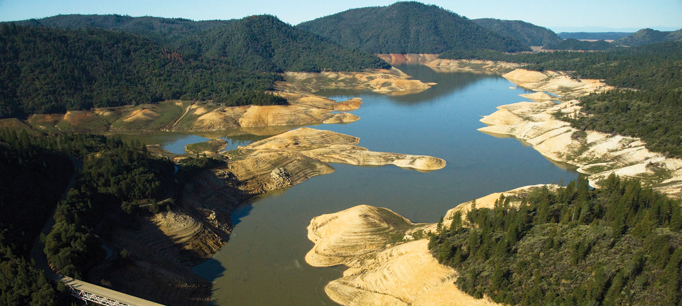This is part of a continuing series on the impact of the drought.
The California Department of Public Health has identified 17 community water districts at risk of running out of drinking water this spring. This affects more than 40,000 people, most of them in normally water-rich Mendocino and Sonoma Counties. Although our early February rains have helped, they haven’t significantly changed the outlook for this year. If the drought continues into next year, many more communities will be in trouble.
State and local officials are appropriately focused on providing emergency supplies to meet health and sanitation needs, but it is instructive to examine how these communities ended up in this predicament and how they might avoid it in the next drought.
The 17 at-risk districts have three things in common:
- They are small (with populations below 11,000—and as low as 39). The limited number of ratepayers makes it difficult to raise the capital necessary to build drought-resilient systems or take advantage of the economies of scale that come with larger water systems.
- They have just one, or at most two sources of water, which increases their drought vulnerability.
- They lack physical connections to other water districts. When hard times come they cannot purchase water from urban or agricultural neighbors (a good case study is the town of Lompico, near Santa Cruz).
Compare these small water districts to larger urban counterparts such as the East Bay Metropolitan Utility District, the San Francisco Public Utilities Commission, and the granddaddy of them all, the Metropolitan Water District, which provides water to more than 14 million people in southern California. These large districts have broad-based funding, mixed surface storage and groundwater sources, and connections to multiple water networks. As a result, they are in fairly good shape in this third year of a record-setting drought. (The Metropolitan Water District may be in the best position of all: having learned hard lessons during the 1987–92 drought, ratepayers in this dry region have invested more than $3 billion to improve all facets of water management.)
Many of the more than 2,500 agencies that supply water to California’s cities and towns are at risk of severe drinking water shortages in a prolonged drought. Others could be forced to dramatically curtail water for other domestic uses, such as landscaping. When the drought emergency ends—and it will end, eventually—California policymakers may need to help many small water districts reassess funding strategies. Many districts will need to diversify their supply portfolios, and it should be possible for all but the most remote rural districts to set up water sharing with neighbors in times of scarcity and abundance.


